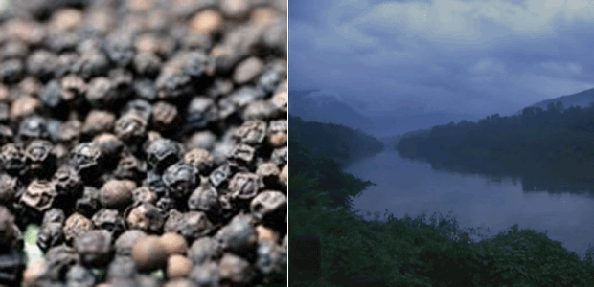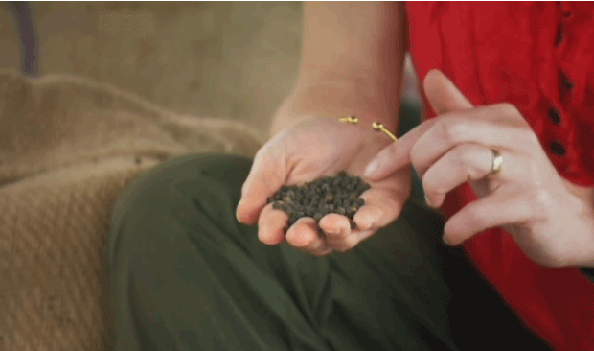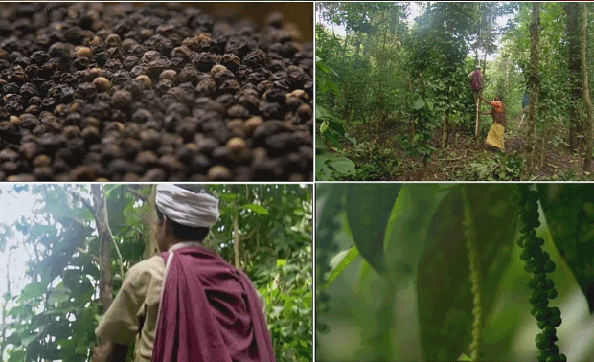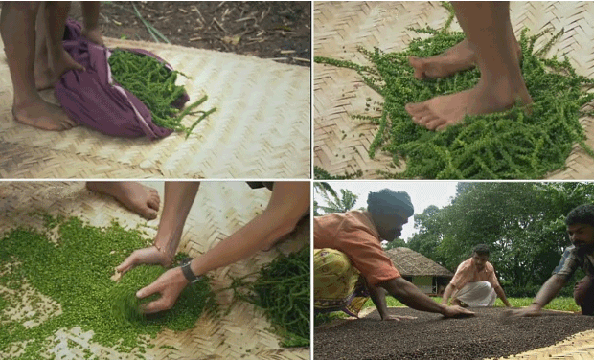|
Black pepper is undoubtedly the most popular and
important spice in the world. Pepper is a very pungent spice, and gets
this from a volatile oil called alkaloid piperine. The pepper plant
itself is a perennial vine that has dark green leaves and small white
flowers.
These flowers become clusters of green berries, which is the product
known as green peppercorns. Black peppercorns are the unripe berries
that have been sun-dried, while white peppercorns are just black
peppercorns with their outer skins rubbed off.
|
|
 |
|
Black peppercorns are harvested as the berries are turning red, just
before they are completely ripe. They are left on mats to dry and
ferment in the sun. This must be done quickly to prevent mold. As the
berries dry they turn black in color. Because the pungency of black
peppercorns comes mostly from the outer, black cover, they are stronger
than the white peppercorns.
Black pepper is native to southwest India, but its trade can be traced
all the way back to the earliest civilizations. Mummies from around 1200
B.C have been discovered with peppercorns as part of the mummification
process. This shows that there was an active spice trade between India
and Egypt.
|
|

|
|
In ancient days, the typical pepper orchard in India consisted of a
small plot of land where moisture and shade were abundant. The pepper
vines would be planted next to tall trees in order to be able to train
the vine’s growth pattern. The idea was to get the plant to grow
upwards, allowing full berry production.
Pepper plants were planted every June at the beginning of the monsoon
season in India. The plants would shoot up and start to climb the taller
surrounding trees. They would flower the following may, and in December
the berries began to change color, and were ready for the harvesting.
Since the berries were fragile, picking the fruit was done with great
care. After picking, the pepper berries were spread out onto the ground
and allowed to dry until they turned black and shriveled up. After about
a month’s storage, they were ready to be sold as black peppercorns.
|
|

|
|
The world’s spice trade itself is not as prevalent in today’s world, but
the popularity of black pepper continues today, as virtually every
cuisine from every part of the world imports the spice into their
cooking on a daily basis. Economically and gastronomically, black pepper
remains the world’s most important spice today.
|
|
 |